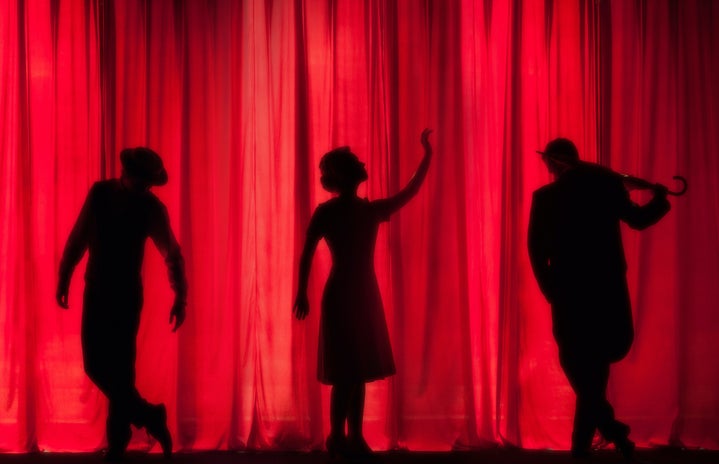Educational institutions across the globe are struggling to provide a fully integrated curriculum for students. Bearing the brunt of government cutbacks, many school systems have reduced, and in some cases eliminated, arts programming. In a 2018 BBC News survey, an alarming nine out of ten secondary schools claimed to have cut back arts education (Jeffreys, 2018). This is an alarming statistic, as there is an immense amount of research confirming the significance of the arts to society. Through this research and my personal experience, I hope to share how government cutbacks inhibit a well-rounded education.
It is baffling that arts funding gets slashed when there is a copious amount of research cementing the importance of arts in early childhood development. Governments seem to follow the old-fashioned ideology that the arts are a frivolous waste. Education, instead, should focus on quantifiable learning utilizing standardized testing. Yet, the rate of childhood cognitive growth can be linked directly to arts-related activities (Sousa, 2006). Activities including dancing and playing an instrument are highly engaging and subliminally form social skills. For example, children involved in the performing arts are far more likely to collaborate effectively and feel confident in a team environment (Sousa, 2006). Through early creative experiences, children see that teams require a sense of unity and understand the power of their voice. These experiences, therefore, boost problem-solving skills, flexibility, and empathy, which form a basis for future growth and development. The performing arts, in particular, also encourage the development of gross and fine motor skills; children are blending mental stimulation with physical activity. If government funding for the arts continues to diminish at its current rate, children may struggle to develop interpersonal and intrapersonal skills, eventually limiting societal growth and understanding. This information should be invaluable to educators since it is now up to elementary-level teachers to introduce arts-related activities to the classroom. An effective way to do so is by utilizing music. Young children respond well to short songs and nursery rhymes, which they use to retain content and understand patterns and rhythm. Though this is far from the ideal arts-based curriculum, it may help subsidize for loss of government programs.
As youth flow through the education system, the arts become incredibly important. The high school curriculum is much more complex, striving to hone critical and creative thinking. In the absence of strong arts programming, students are missing a major educational building block. A study headed by Professor James Catterall at UCLA, examined the educational differences between youth who had been exposed to the arts and those who had not (Catterall et al., 2012). Catterall followed a group of youth from grades eight to ten who were all derived from low socioeconomic backgrounds. These students would form the basis of his database. The results of this study revealed the true value of the arts, showing how art influences the overall school experience. The study concluded that students involved in the arts were more likely to experience success in other classes (Catterall et al., 2012). Art students also held lower drop-out rates, with many aspiring to attend university. Catterall’s findings speak volumes for the arts and once again prove how important they are for developing minds. As a high school student involved in the performing arts, specifically theatre, I can attest to Catterall’s conclusions. The performing arts is an excellent creative outlet for teenagers and young adults and builds a sense of community and belonging. I am very grateful to live in a community where the arts are appreciated and children are encouraged to experiment with different art forms. Having taken part in my high school’s musical theatre courses, I have observed peers flourish as they take the stage in their first musical production. They steadily gain confidence, determination, and above all, passion. This experience has helped me understand the role art plays in society as well as the severity of government cutbacks. In Ontario alone, $5 million was deducted from the Ontario Arts Council’s budget, not to mention the deduction from the public school system (Shum, 2018). If this continues, students and entire communities will surely suffer the consequences.
Though increased government funding is the desired solution, educators are searching for methods to support students and are starting to introduce new techniques and ideas into the classroom. In recent years, the STEM (Science, Technology, Engineering, Mathematics) to STEAM (Science, Technology, Engineering Arts, Mathematics) movement has gained traction and helped many teachers incorporate art into math and science lessons. Following the release of the 2013 book, From STEM to STEAM: Using Brain-Compatible Strategies to Integrate the Arts, a discussion ensued on the value of the arts in regards to other subjects (Perignat & Katz-Buonincontro, 2018). STEM to STEAM wants to highlight the importance of the creative process, not just convergent thinking. STEAM advocates for artistic growth and acknowledges how this is a vital part of innovation. Exposing children to STEAM ideology provides more educational pathways and further prepares them for life (Martinez & Stager, 2013). In particular, a background in STEAM will be very helpful as students enter the workforce. An article written in Forbes magazine stated that companies are seeing an ever-growing skills gap between what employers want and what employees can give (Ceniza-Levine, 2019). Due to this, a student with a more diverse skill set, including a basic knowledge of the arts, is likely to become more successful in the working world.
To conclude, government cutbacks are unfairly targeting the arts and stripping away the right to a well-rounded education for children around the world. The arts, in any form, give students the unique opportunity to be expressive while building the basic skills needed for future achievement. The arts are an integral part of life, as proven time and again through research and personal experiences. When will there be a breakthrough? Will artistic experiences forever be limited to some communities and not others? I contend that insufficient arts education will fail generations of children. Although STEM to STEAM is an outstanding movement that deserves continued support, we must call on our government officials to take legislative action. Providing students with an arts education is simply imperative to personal development, as well as maintaining a sense of societal cohesion and innovation.
Works Cited
Catterall, J., Dumais, S., & Hampden-Thompson, G. (2012). The Arts and Achievement in At-Risk Youth: Findings from Four Longitudinal Studies (pp. 8-16). National Endowment for the Arts. Retrieved from https://www.arts.gov/sites/default/files/Arts-At-Risk-Youth.pdf
Ceniza-Levine, C. (2019). There Is A Growing Skills Gap Between What Employers Want And What Employees Offer: How Your Career Can Benefit. Retrieved 7 January 2020, from https://www.forbes.com/sites/carolinecenizalevine/2019/09/22/there-is-a-growing-skills-gap-between-what-employers-want-and-what-employees-offerhow-your-career-can-benefit/#7034d06b3db9
Jeffreys, B. (2018, January 30). Creative subjects being squeezed, schools tell BBC. Retrieved December 29, 2019, from https://www.bbc.com/news/education-42862996
Martinez, S., & Stager, G. (2013). Invent to learn (pp. 54-55). Torrance, CA: Constructing Modern Knowledge Press.
Perignat, E., & Katz-Buonincontro, J. (2018). From STEM to STEAM: Using Brain-Compatible Strategies to Integrate the Arts (pp. 1-8).
Shum, D. (2018). Ford government cuts funding to Ontario Arts Council, impacting Indigenous Culture Fund. Retrieved 30 December 2019, from https://globalnews.ca/news/4762100/ontario-arts-council-cuts/
Sousa, D. (2006). AASA | American Association of School Administrators. Retrieved from https://www.aasa.org/SchoolAdministratorArticle.aspx?id=7378


